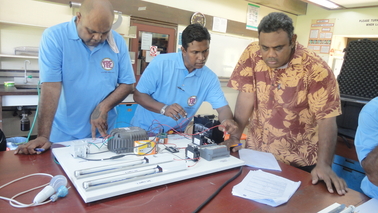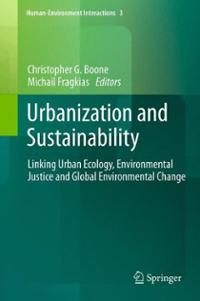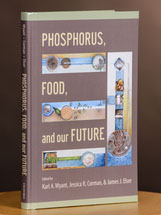August 28, 2013
Dear Board Member,
August's update features a Thought Leader Series piece by John Sabo, director of research development for ASU's Global Institute of Sustainability. In his piece, Sabo reflects on the recent extreme weather events across the U.S., and how climate change will increase fires, floods, and droughts.
Please feel free to email or call us with any questions or comments about this briefing.
Best regards,
|
A Thought Leader Series Piece
 By John Sabo By John Sabo
Note: John Sabo is the Global Institute of Sustainability's director of research development, where he leads a grant proposal team that since 2008, has brought in over $44 million in expenditures. Sabo also collaborates with scientists across the U.S. investigating the impacts of water shortages on the sustainability of human and natural systems.
The year 2013 will be remembered in the U.S. as a year of extremes: The effects of Hurricane Sandy continue to cripple New York City. Droughts across the Corn Belt are causing massive crop failure. Devastating fires destroyed hundreds of homes in Colorado for a second year in a row. Flash floods have claimed lives and businesses from coast to coast, including communities experiencing recent drought and fire. This year was exceptional. Or was it?
When most people think of climate change, they think of global warming—the trend of rising air temperatures that causes a shift in expected or long-term average climate conditions. There are valid exceptions to the trend of course. Many people observe their cities occasionally cooling, and therefore think global warming is not happening. Local observations that differ from the global average from time to time are an example of a second aspect of climate change that is equally, if not more important, than the global trend: Climate change exacerbates regional differences in climate as well as the swing between years of famine and years of plenty.
In statistical terminology, the climate change trend and increasing trend departures are explained as changes in the "moments" of our long-term climate record. Translation: Think of the bell curve from a large college class. The peak of the bell curve is the most common test score (e.g., a "C"). This peak is the first "moment" (also called the average), and climate scientists predict this moment will move to the right during warmer temperatures.
Now back to test scores. The width of the bell curve represents the variation in all test scores. A wider bell curve means less Cs and more As and Fs among college classmates, or in the case of climate, extremely high temperatures and extremely low temperatures. The width of the bell curve is the second "moment" (also called the variance), and is also predicted to increase during climate change.
Both predictions have been observed in our current climate record; the first moment (peak of bell curve) and second moment (width of bell curve) have both increased. The increase in the second moment is best exemplified by year 2013: our exceptional year of extremes.
Read more »
|
|
GreenBiz.com: How ASU aims to create sustainability leaders in business
|
|
School of Sustainability Interim Dean Chris Boone says the Walton Sustainability Solutions Initiatives' new program will help business professionals find solutions and apply sustainability on the ground.
Read more »
|

|
Heliae raises $28.4 million for Gilbert expansion
|
|
The ASU research spinout company will use the funds to establish its first commercial algae manufacturing plant for personal care and nutrition supplement markets. Read more »
|

|
ASU partners with renewable energy organization for solar education in Pacific Islands
|
|
The partnership will bring a solar workshop led by ASU's College of Technology and Innovation and certifications to lessen the islands' reliance on costly fossil fuels and strengthen economic independence. Read more »
|

|
Book addresses issues of the urban century
|
|
School of Sustainability Interim Dean Christopher Boone and research partner Michail Fragkias say vulnerability science can assist local environmental justice issues to inform long-term urban sustainability. Read more »
|

|
Urban heat island phenomenon explained
|
|
Broadcasted live from Phoenix, Sustainability Scientist Matei Georgescu discussed causes of and solutions for urban heat island effect to Beijing viewers of China Central TV-America. Read more »
|

|
Essential nutrient is examined in book, "Phosphorus, Food, and Our Future"
|
|
Phosphorus is intertwined with all facets of life, including food, water, jobs, waste, and health, which are all outlined in the new book edited by Sustainability Scientist James Elser. Read more »
|

|
|